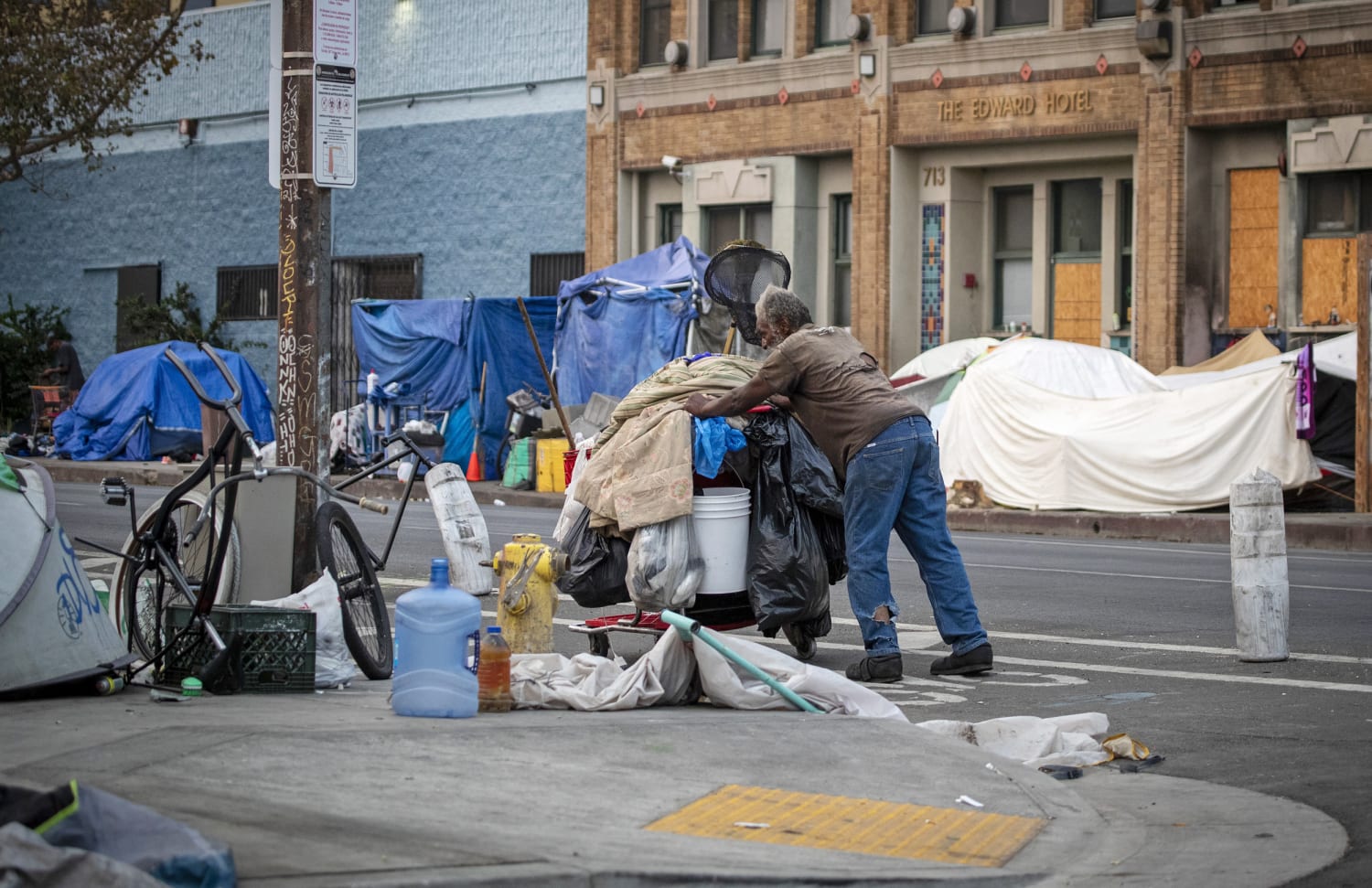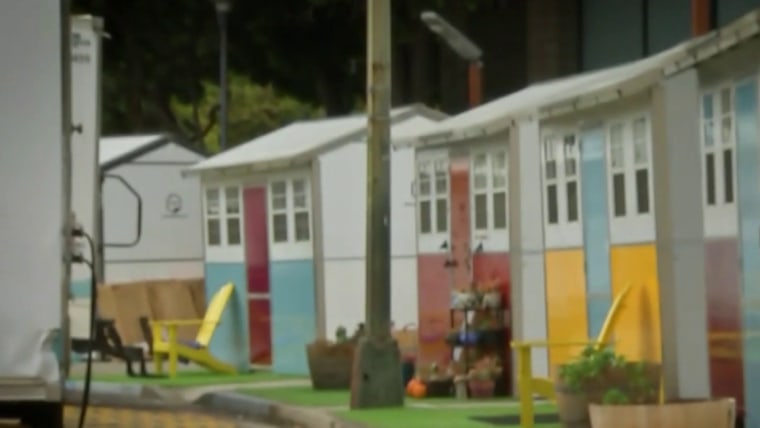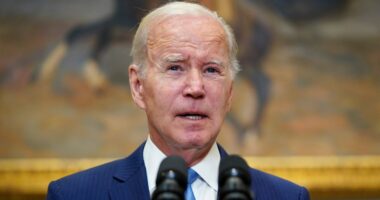LOS ANGELES — California pours billions of taxpayer dollars into fighting homelessness each year but has little to show for it, as experts warn thousands could die before enough housing is secured for them.
In San Francisco, hundreds of housing vacancies remain unfilled as the Covid-19 pandemic has slowed efforts to pair homeless residents with hotel rooms and other forms of temporary housing.
In Los Angeles, a $1.2 billion bond measure is falling short of its promise to create up to 10,000 housing units for homeless people over a decade as construction costs skyrocket and projects drag on, according to a city audit released Feb. 23.
“It’s like the walking dead out here,” said LaJuana Johnson, who lives in a tent on Skid Row in downtown Los Angeles. “They’re just waiting for judgment.”
Piecemeal social programs and soaring home building costs have stalled efforts just as the state promises to allocate another $2 billion to homelessness programs, including behavioral health housing and encampment clearing.
Adding to the complexity is a decentralized funding system that makes it difficult to track how money is spent. A 2021 state audit chided the California Interagency Council on Homelessness for failing to track spending across the state, which was part of the reason it was created in 2017.
Without a centralized statewide effort to address the public health crisis, each city and county must fend for itself to secure funding from a hodgepodge of local, state and federal sources, and then try to approve programs that everyone — providers, politicians and county officials — can agree on.
“We have a very challenging system and we’re trying to make it work,” said Molly Rysman, chief program officer at the Los Angeles Homeless Services Authority, which coordinates spending and oversees housing and social services for sprawling Los Angeles County. “We do not have a well-oiled machine and that has become a real crisis in this county in terms of housing unhoused residents.”

California had roughly 161,548 homeless residents in 2020, the last year a count was conducted because of Covid-19. Service providers are bracing for an even higher number this year as pandemic-fueled unemployment and housing costs skyrocket.
In January, Gov. Gavin Newsom announced the state would give a record $14 billion over several years to combat homelessness in major cities and smaller communities.
The state also doled out $50 million in grants last month to various cities and counties, including Santa Cruz and Orange counties, to house 1,400 people living in homeless camps. If the Legislature approves Newsom’s budget in June, the amount would climb to $500 million.
Millions more have been allotted to individual cities and counties through the state’s Roomkey and Homekey initiatives, which have provided shelter to 58,000 people since 2020, according to the governor’s office.
“I don’t want to see any more people die in the streets and call that compassion,” he said in January while unveiling his $286.4 billion budget proposal. “There is nothing compassionate about someone dying in the streets or stepping over someone on the streets or sidewalks.”
‘Several thousand unhoused residents will die’
Los Angeles was called the “homeless capital” of the country by federal officials in 1984 and has lived up to that nickname ever since. The county of some 10 million people has more than 66,000 homeless residents, the majority living in the city of Los Angeles.
Stunned and saddened by the sight of people living in tents near wealthy neighborhoods, parks and under freeways, voters agreed in 2017 to tax themselves. Measure H, a quarter-cent sales tax, has generated $1.7 billion in revenue so far, or roughly $425 million a year, according to the Los Angeles County Homeless Initiative, which oversees the funds and develops strategies to reduce homelessness. The money pays for social services, rental subsidies and building new housing.
Los Angeles County has permanently housed about 78,000 people and placed nearly 105,000 in interim housing since the measure was passed, according to county data.
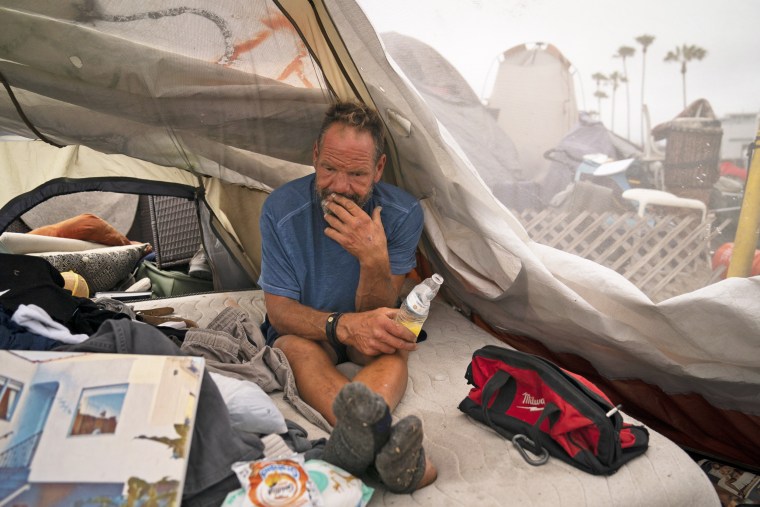
But demand is outpacing supply, warned Cheri Todoroff, executive director of the county’s homeless initiative.
“The need far exceeds the availability of Measure H funding,” she said last month during a presentation. “We need new investments of ongoing funding into our homeless services system in order to grow and expand and to provide new services.”
A separate voter approved measure in the city of Los Angeles is also coming up short in its promise to deliver supportive housing, which would link homeless residents with social services and create thousands of additional units. Only 16 percent of the approved projects have been completed since Proposition HHH was passed in 2016, for a total of 1,142 units in five years, according to a recent audit by the city controller.
Roughly 58 percent of the projects approved by the city are under construction, and nearly a third are in predevelopment stages.
Yet, construction costs are getting more expensive as the years drag on, endangering the lives of more than 40,000 people who remain homeless, the city controller found. The most expensive project, currently in predevelopment, will cost $837,000 per unit to build, while the average per-unit cost has grown from $531,000 in 2020 to $596,846 in 2021.
“At the current trajectory, several thousand unhoused residents will die before HHH-funded housing projects are completed,” City Controller Ron Galperin grimly concluded in his report.
“It is a moral crisis, it is a humanitarian crisis, it’s a public health crisis, it’s a public safety crisis, and it is the existentialist crisis we have here in Los Angeles,” he said in an interview.
The Los Angeles Housing Department, which oversees Proposition HHH funds, declined to comment on the audit and referred NBC News to a letter it sent to Mayor Eric Garcetti on Feb. 23 that said the rising costs of building materials and land are to blame.
Rysman, of the homeless services authority, said California’s high cost of living is a main driver of homelessness, and without investing in affordable housing, the state will continue to struggle.
“There’s an incredible challenge trying to get people out of homelessness using the free market,” she said. “There needs to be a real reckoning in this country about whether that will work. What we’re doing today is not enough.”
San Francisco works to meet its housing demand
In July 2020, San Francisco Mayor London Breed set the goal of creating at least 6,000 beds in housing units and shelters over two years. As of Jan. 31, the city has housed more than 3,700 people and is on track to meet its goal of purchasing 1,500 permanent supportive housing units that would pair residents with services, according to city data.
But nearly 900 vacancies in permanent supportive housing remained empty as of Feb. 22, the city confirmed, and about 1,633 homeless people approved were still waiting to move in. The system was slowed by the pandemic as providers prioritized housing for people with a high risk of dying from Covid, said Emily Cohen, deputy director of communications and legislative affairs for the city Department of Homelessness and Supportive Housing.
“We thought we would be further along with our goals, but we also thought we would be further along in the pandemic,” she said.
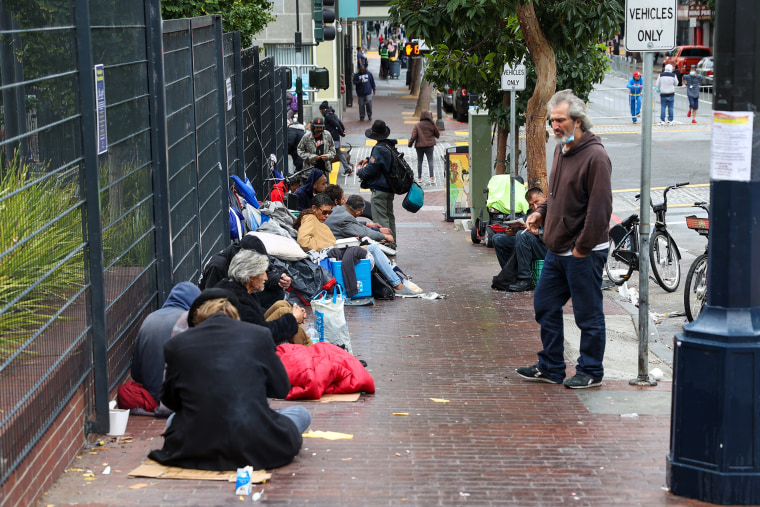
Since the pandemic started, San Francisco has provided emergency shelter to some 3,000 homeless people and placed more than 900 into permanent housing, including almost 200 in January, she added.
Still, like Los Angeles, San Francisco has a shortage of affordable housing stock available for anyone, let alone people who have already fallen into homelessness.
“We’re making tremendous progress in specific areas, but for the average citizen, unfortunately, homelessness is still very visible and that drives the conversation,” Cohen said. “It still feels like we’re in a state of crisis even though we’re making a lot of progress.”
Source: | This article originally belongs to Nbcnews.com


